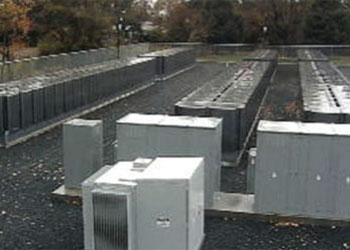Delmarva Power has deployed 30 megawatts (MW) of Bloom Energy Servers — enough to power about 22,000 homes — that produce clean, reliable power for its Delaware customers. With the largest utility-scale deployment of fuel cell technology in the U.S., Delmarva Power brings the following economic and environmental benefits to the state:
- Enhancing Delmarva’s renewable energy portfolio with innovative clean energy technology;
- Providing price stability and predictability over the term of the project;
- Providing environmental benefits far superior to conventional electricity generation;
- Attracting jobs to Delaware with Bloom Energy’s new manufacturing center
- Supporting the Bloom Energy Manufacturing Center in Delaware
Delmarva Power’s use of the Bloom Energy Servers helped bring the new Bloom Energy Manufacturing Center, on the site of the former Chrysler plant in Newark, Del. This facility offers a unique opportunity to convert a defunct auto manufacturing site to a modern factory, bringing twenty-first century innovation and the next generation of new jobs to Delaware.
The Bloom Energy Manufacturing Center will serve as a catalyst for manufacturing and will help position Delaware as the East Coast center for clean energy technology.
Implementation
Delmarva Power has deployed the Bloom Energy Servers at Delmarva substations. The clean energy systems are scalable, modular and quiet so they can be clustered and located virtually anywhere where there is natural gas service and an electric load to serve.
The utility’s Bloom Energy Servers decrease carbon dioxide emissions by approximately 50 percent compared to Delaware’s electric grid, nearly eliminate smog-forming particulate emissions such as SOx and NOx, and use less than 0.002% of the water required by conventional electricity generation.

